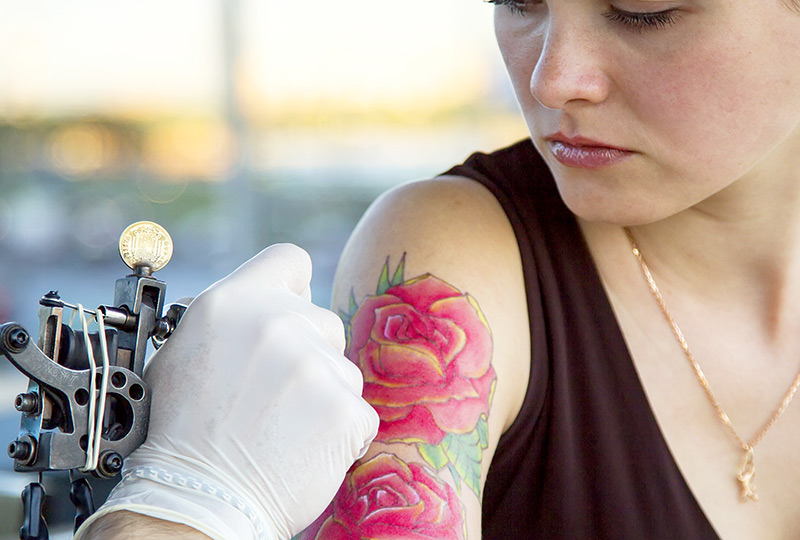Tattoos and piercing are still trending upward, and so is their removal.
Tattoos and piercings have evolved from a badge of rebellion to almost becoming a rite of passage. According to a Harris Poll from 2015, about 29 percent of all Americans and 47 percent of millennials (18-35) have at least one tattoo.
Because social stigmas are softening, parents and peer groups are probably less likely to discourage body art and more likely to encourage good decisions based on experience. A poll of healthcare providers and the already-inked revealed some common-sense advice on tattoos or body piercings.
Infections associated with piercings and tattoos are always a concern. Pick a reputable studio, stop in for a visit and ask questions about infection control.
Signs of a safe studio
- The studio is clean, with separate areas for tattoos and piercings.
- Needles are opened from sealed packages in view of customers, and staff members use new, sterile gloves for each customer.
- Piercings are done with a needle and not a piercing gun. Auto-piercing guns cannot be properly sterilized.
Special considerations for teens and body art
Most Southern states require children under 18 to get signed parental consent for piercings or tattoos. In Louisiana, Tennessee and Texas, a parent must be present for minor to get a tattoo. Still, some determined teens turn to amateurs for tattoos or body piercings without parental consent.
Nick Desai, M.D., a pediatrician at the Adolescent and Young Adult Health Clinic at Monroe Carell Jr. Children’s Hospital at Vanderbilt, recommends teens thoroughly research tattoo and piercing parlors before the visit.
“Remember, there’s no reason to do anything in a hurry. A tattoo or piercing is something you’ll live with for the rest of your life,” says Desai. “Whatever you do, do not get a tattoo or piercing when you are drunk or high and never get a tattoo or body piercing while you are pregnant.”
Tattoo removal
If you’ve outgrown that unicorn inked on your shoulder, laser tattoo removal is trending right along with tattooing. The American Society for Aesthetic Plastic Surgery reports that Americans had 46,514 tattoo removal procedures in 2015, up 39 percent over 2014. Women accounted for 68 percent of that total.
Green and yellow are the most difficult inks to remove. You can expect about 95 percent of the tattoo to be faded, depending on the kind of ink, color and size of the tattoo.
“The pain associated with tattoo removal varies more with patients than with the laser,” said Darrel Ellis, M.D., a dermatologist at Vanderbilt Dermatology One Hundred Oaks. “Some patients do well with no anesthesia, while others require topical anesthetic cream or an injected local anesthetic. Removing tattoos from sites, such as over the ankle bone, seem to be more painful than others.”
Busting a couple of myths
You don’t have to wait a year after tattooing to donate blood in some states. In the South, you can donate after healing if you get inked at a licensed parlor in Tennessee, Alabama, North Carolina, Florida or Kentucky.
According to Vanderbilt radiologists, it is rare for tattoos to interact with MRI. Only a tiny percentage of inks produced more than 20 years ago contained metals that might heat up during an MRI scan.

We know most people love their body art for a lifetime. If your ink no longer reflects your life, or you’ve decided to close up your ear gauge, doctors at Vanderbilt Dermatology are your medically trained experts for laser removal and cosmetic reconstruction.

